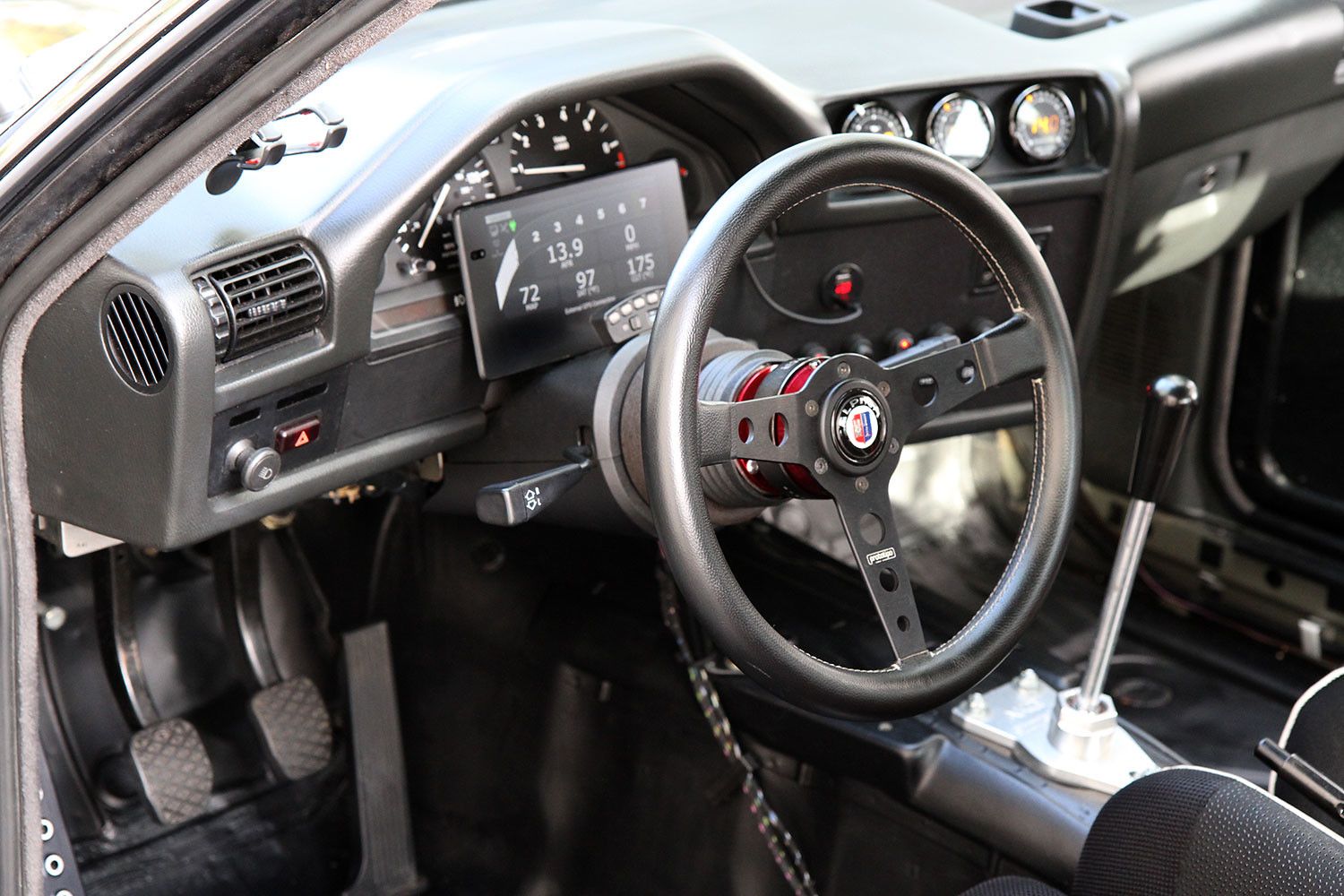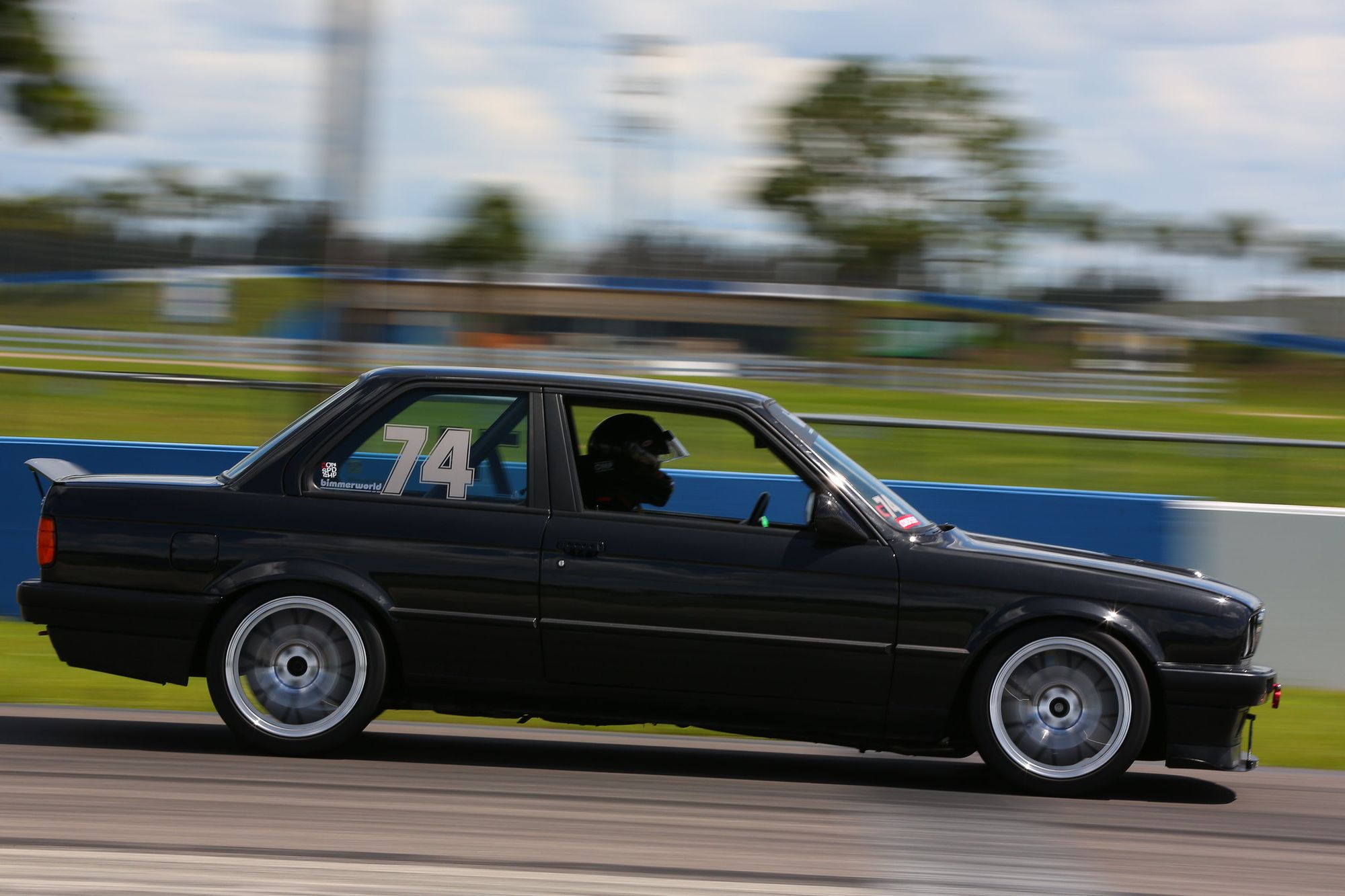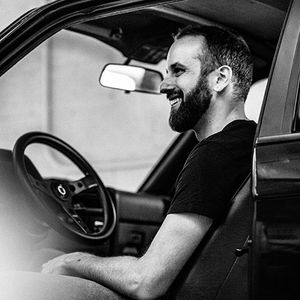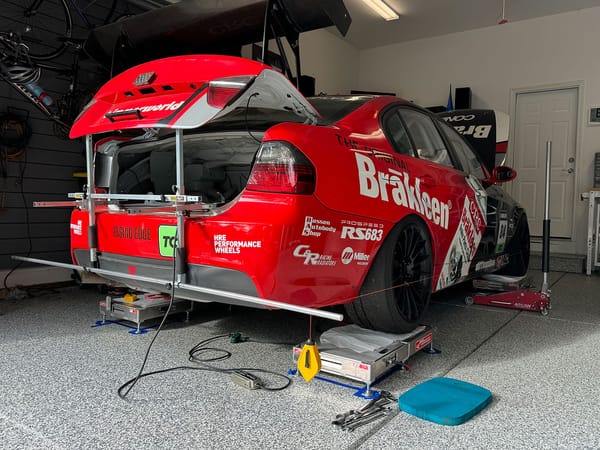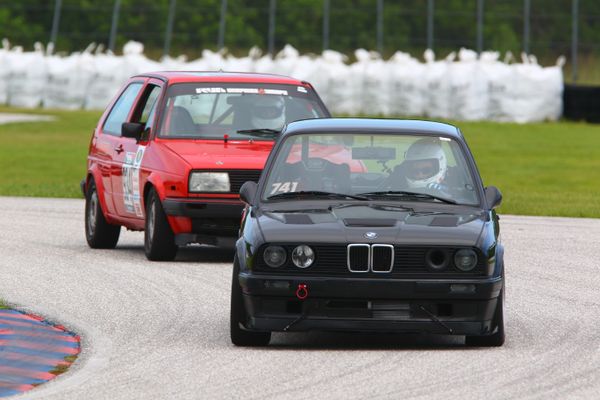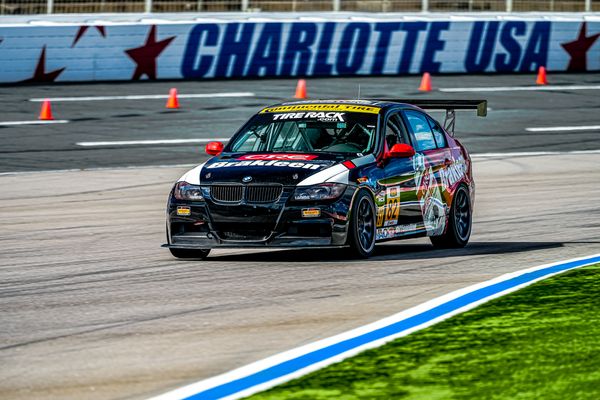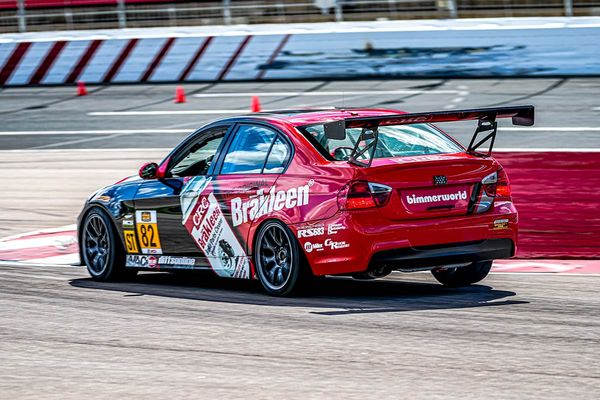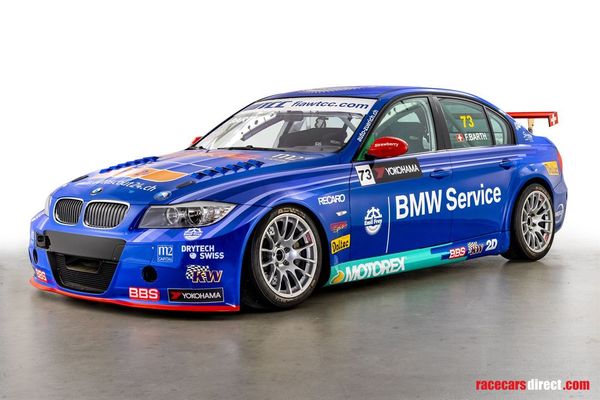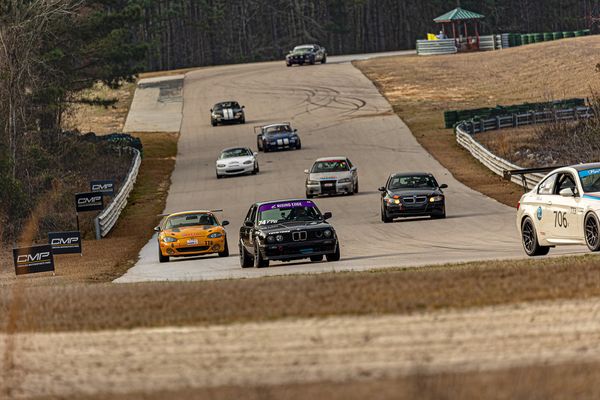When it comes to safety equipment, ask ten people and you're going to get ten different answers. Without getting too deep into the specifics, I wanted to document some of the overarching safety equipment systems for various levels of track use. This guide will cover three system archetypes:
- Track Days (HPDE)
- Time Attack (Time Trials)
- Racing (Wheel to Wheel)
I'm not going to specifically focus on safety in autocross or drifting, since I am not as familiar with those disciplines. However, autocross tends to take a lighter approach to safety due to the lower speeds and generally "open" courses. Drifting can vary quite a lot due to the wide range of governance. Some of it thrives on being grassroots with almost no rules, but in organized competition, especially tandem driving, the safety equipment would be very similar to that of the Racing system that we'll cover here.

Before we begin, and without being too preachy, I wanted to share my humble opinion that if you do anything more than an occasional track day, and certainly if you have a "dedicated" track car, you should absolutely strive for the highest common denominator when it comes to safety equipment. What I mean by that is even if you are in HPDE, you don't have to stay with "stock" safety equipment. You can and should consider going to a full Racing style safety setup, or at least a middle-ground, like a Time Trial setup. While you may feel that you are safe on the track, accidents happen, and most of them are completely unforeseen. You probably have family, friends, and co-workers that rely on you, or at least love you very much, so just think about what it would mean to be injured, burned, or even killed on track. The potential consequences shouldn't be taken lightly.
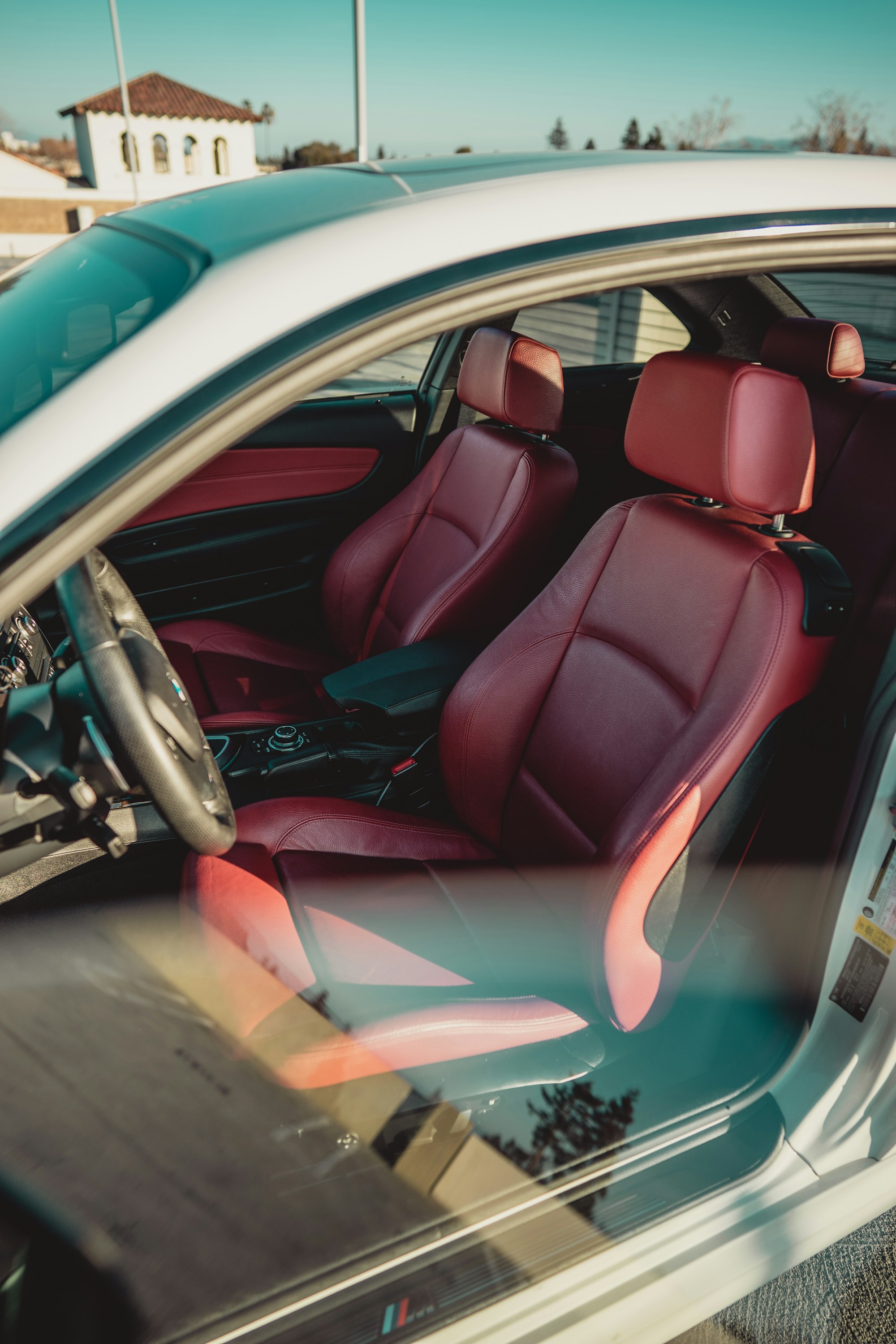
Safety As a Comprehensive System
When it comes to safety equipment, it is best to think of the entirety of the setup as a system. There are different levels of systems, and while you can potentially run a higher level system than is required, you can't run less, and you usually can't mix and match very much. Let's get started with the most basic system.
Track Days / HPDE (Factory Stock)
Before committing to a higher tier safety system, many will begin their track journey while using a completely stock, "as it came from the factory" safety system. Hallmarks of this system will include:
- Airbags (when applicable)
- 3-point seatbelts
- Reclining seats
These items were designed by very talented engineers with large budgets in order to make the cars as safe as possible, and especially when it comes to more modern cars, they truly are very safe. That said, they do make a large trade off in favoring daily comfort over support/control. You will find yourself struggling to stay put in even the best sport-oriented production seats with 3-point seatbelts.
Here are some do's and don'ts with a factory safety system:
Do:
- Leave everything stock
Don't
- Remove or disable airbags
- Start adding things like harnesses or fixed back racing seats without a roll bar/cage
Since car-to-car contact is exceedingly rare with track days & HPDE, this is a good place to get started and try things out without committing to a gutted car that is not streetable any longer.
Time Attack/Time Trials (In-between-er)
When you are ready to take your safety equipment to the next level, it is tempting to go with a setup that is somewhere in between factory stock and a full racing setup. Your car then may become a "tweener" as my friend Jonathan likes to call them (somewhere in between a street car and a race car). There are definitely compromises on both ends here – the car isn't as safe on the street as it was before, and while it's definitely safer on the track, it's not as safe as a full racing system.
This safety system is completely appropriate for track day and HPDE use as well as Time Attack. Generally, at least with NASA and SCCA, these items are not required but are encouraged for Time Attack drivers. Hallmarks of this system include:
- Roll bar (or cage)
- Fixed back racing seats
- 5- or 6-point harnesses
- Airbag removal
- HANS device
Optional items
- Nomex/fire retardant gear
- Battery killswitch
- Fire suppression/extinguisher
- Containment (halo) seat [highly advised]
- Window nets
Before committing to a setup like this, I would encourage you to think long and hard about the long term plans for your car and your track career (for lack of a better term). I have a car that is a tweener, and within 2 years of having the custom roll bar welded in, I wished I had gone with a full roll cage. Especially as I was getting faster and pushing harder on the track, I began to realize I wanted a full cage. The reality was that while I thought I would still drive the car on the street regularly, after stripping out the interior and turning it into a quasi-race car, I rarely drove it on the street anyways. I should have fully committed and gone with a "full race" safety system from the start.
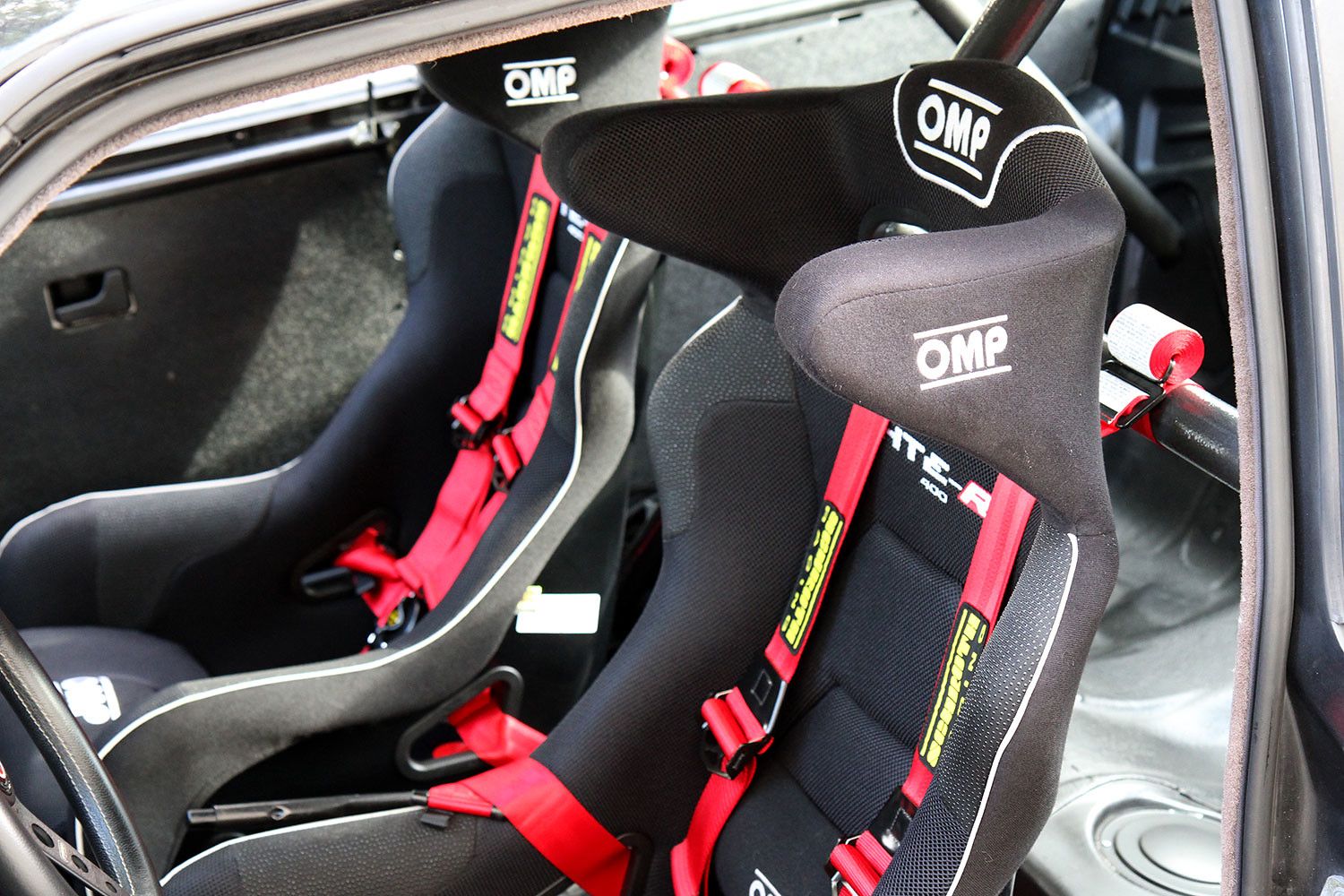
By this stage, your car is probably pretty loud and hot. Harnesses are not advised to be used without a HANS device. Visibility isn't great out of racing seats, especially a containment seat. There might be some more metal bars near your head depending on roll bar/cage design. All these factors lead to reduced enjoyment driving on the street, and certainly reduced safety. These are all things to consider with a system that has compromises.
Here are some do's and don'ts with a Time Attack safety system:
Do:
- Roll bar/harness/seat are always done as a package deal.
- Always use a HANS device with 5/6 point harnesses. Always.
- Seriously consider a containment (halo) seat. HANS devices only protect forward neck motion. They do nothing to prevent your neck from craning sideways. That is what the halo wings are for.
Don't:
- Think you can get away with a "harness bar." Those things shouldn't exist.
- Wait too long to consider safety gear. You should be safer before you go faster.
- Don't rule out wearing Nomex. Sure, you might get some funny looks at the driver's meeting in lower levels of HPDE, but who cares? Safety should never be frowned upon. You value your skin, don't you?
A Time Attack safety system is going to be a huge step up when it comes to car control and feeling connected to the car. No longer will you be spreading your knees out to the door panel and transmission tunnel trying to brace yourself. You will probably save a considerable amount of weight when removing the stock seats, airbags, etc. from the car. Your body and neck will be better protected via the harness and HANS device. You will have roll over protection.
Racing (W2W Competition)
It should come as no surprise that wheel to wheel competitive racing requires the highest levels of safety equipment. In general I believe most sanctioning bodies do a good job of requiring appropriately safe equipment, although now and again you come across some head scratchers in the rule books. Usually it is okay to go above and beyond what the rulebook requires, except for some restrictions like roll cage design limitations that certain classes ("Spec" classes) might impose.
Again, it is totally okay to use a full racing safety system for track days/HPDE or Time Attack as well. On the track there are almost no downsides, but when you've gotten this far, the car is essentially not street drivable any longer. Hallmarks of this system include:
- Full roll cage (6/8+ point) w/ door bars
- Racing seats with 5- or 6-point harnesses
- Airbag removal
- HANS device
- Window nets
- Battery killswitch
- Fire extinguisher and/or suppression system
- Full Nomex gear (suit, gloves, balaclava, socks, shoes, etc.)
- SFI roll bar padding where appropriate
By the time you're doing wheel to wheel racing, the car has to pass an annual inspection, and the car is said to have a "logbook" when it has been approved for wheel to wheel competition. Remember that sanctioning bodies all have their own requirements, so what will fly with one may not fly with another.

Many of the required safety items have expirations and have to replaced regularly. Everything from your helmet to your belts, window nets, fire bottle, seat, and more, have expiration dates. Some can be renewed (fire bottle) or extended (seat, with addition of a brace to the roll cage), while others have to be replaced regularly (like the window nets and harness belts).
This sounds expensive and daunting, but the reality is that many of the items are going to be due to be replaced just because of wear and tear by the time their expiration comes around. For instance, do you really expect to get 10+ years out of a helmet that you absolutely drench in sweat every single session? Ew.
Thank you for reading! If you would like to discuss anything contained in this article, please feel free to drop me an email! Stay tuned for a related follow up article about roll cage door bar design.
